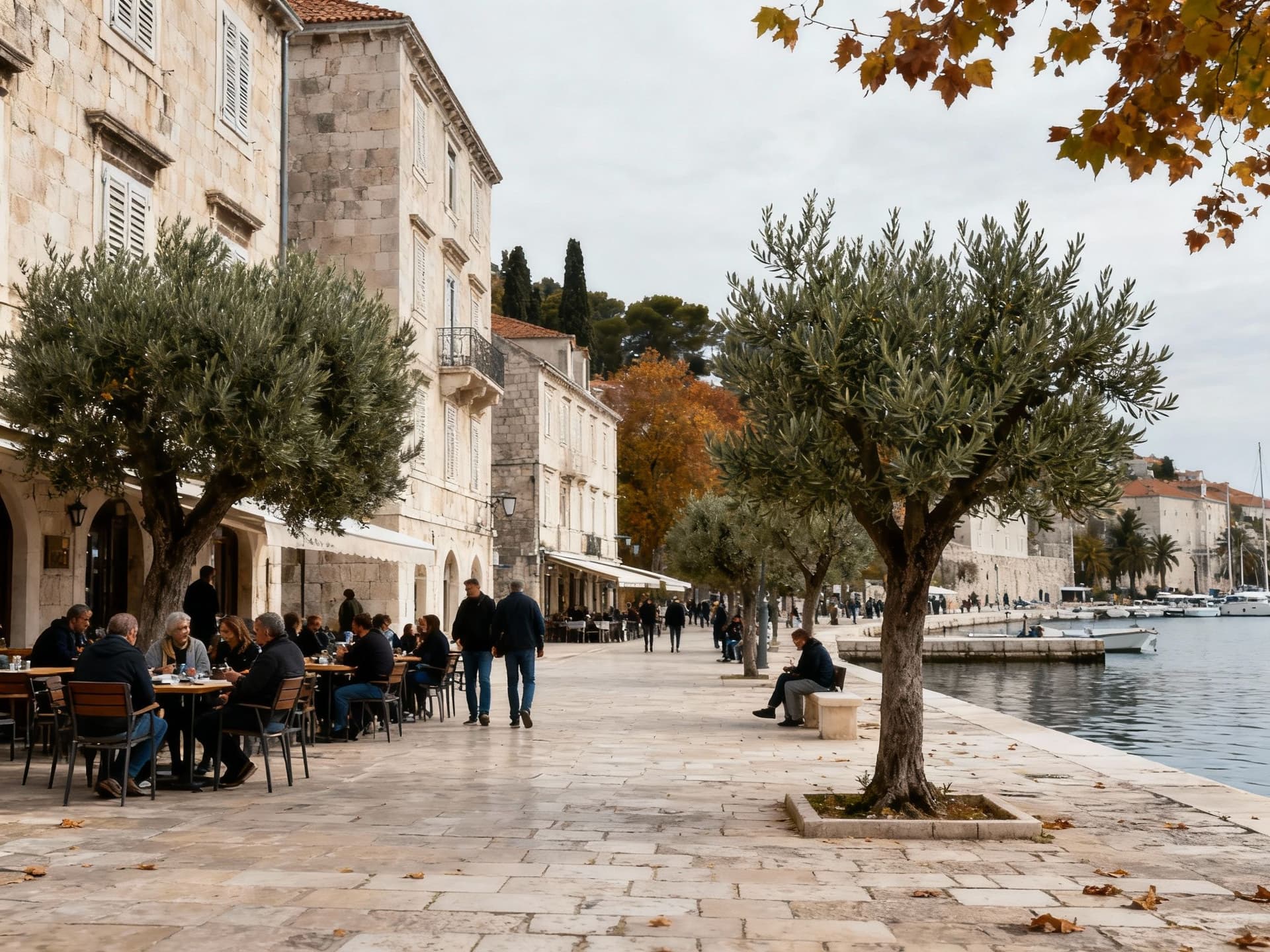Shoulder‑Season Buying in Croatia: A Risk‑Smart Play
Shoulder‑season buying in Croatia often reduces price risk and reveals true rental economics; stress‑test seasonality, tax shifts and vacancy for realistic net yields.
Imagine stepping off an Adriatic ferry in late October: the air is warm, café tables on Split’s Riva are still occupied, and island lanes smell of wood smoke and late figs. This is Croatia outside the postcard summer — quieter marinas, negotiable prices, and a different risk profile for buyers who know how to read seasonality.
Living the Croatian lifestyle (season by season)

Croatia is many things at once: sun-drenched Dalmatian coastlines, baroque streets in Dubrovnik, continental vineyards and sleepy towns inland. Day-to-day life is shaped by seasons — a vibrant tourist pulse in July and August; calm, community-focused months in late spring and autumn; and an intimate, local winter in Zagreb and Istria.
Coastal rhythm: Split, Hvar, Zadar
On the coast the day begins with espresso at a konoba and ends with a slow seafood meal. Hvar’s lavender winds and Split’s fish market on Matejuška set the tempo. Off-season you find long harbour walks, lower short‑term rental churn and local tenants rather than cruise-day visitors — which changes both lifestyle and investment risk.
Continental and city life: Zagreb and Istria
Zagreb hums year-round with cafés, museums and a reliably local rental market. Istria offers hilltop towns, truffle season and agritourism that stretches revenue beyond July. These areas are less exposed to summer-only volatility and often deliver steadier occupancy through the shoulder months.
- Lifestyle highlights: late‑season market strolls (Dolac, Zagreb); island olive‑press visits (Brač); coastal promenades (Split Riva); Istrian truffle festivals (Buzet); evening aperitifs in Rovinj.
Making the move: why timing the season matters to returns

Price momentum in Croatia has been positive — a persistent house price index uptick through 2024–25 — but policy changes and tourism seasonality materially affect net yields. New measures shifting tax burdens toward property owners aim to curb speculative short‑term lets, changing operating costs for landlords and the attractiveness of different asset strategies. Understanding these policy shifts alongside seasonal demand is essential for realistic return projections.
Property styles and the season-sensitive yield mix
Stone town apartments deliver high summer rates but steep winter vacancy unless positioned for long lets; newer developments near transport hubs command steadier year-round rents. When you model returns, separate summer premium income from baseline annual rent — treat the summer uplift as volatile upside, not core yield.
Local advisors who understand seasonality
- 1. Ask for segmented cash‑flow models showing base rent vs summer premium. 2. Request historical occupancy rates for shoulder months (April–June, Sept–Nov). 3. Verify tax treatment for short‑term lets vs long‑term rentals after 2025 reforms. 4. Negotiate clauses that reflect seasonal maintenance costs (e.g., winter heating, hurricane/oluje preparation). 5. Consider properties with flexible use (ground-floor commercial + apartment) to diversify income.
Insider knowledge: three season‑sensitive risks and how to stress‑test them
Seasonality creates specific downside scenarios: abrupt policy change reducing short‑term let revenue; a poor shoulder season that reveals lower baseline demand; and concentrated local supply spikes (new developments) that depress summer rates. Each scenario requires a simple sensitivity test against your cash‑flow model.
How to run a quick sensitivity test
- 1. Start with a conservative base rent (local long‑let market median). 2. Add a summer premium (use historical peak months but cap at 50% of peak seen). 3. Apply policy risk: reduce short‑term income by 30% to model tax or restriction impacts. 4. Stress vacancy: add two extra months unpaid per year to operating expenses. 5. Check resulting net yield; if it falls below your target yield floor, re‑price or walk away.
- Quick signals that a coastal listing is seasonally fragile: new build with many identical units, agent marketing focused only on 'high season', no long‑let comparable rents, and absence of winter heating or insulation details.
Real buyers in Croatia treat summer income as optional upside and calibrate portfolios around base rents and policy exposures. With tourism growth pushing toward year‑round figures, shoulder‑season buyers can often negotiate better prices and secure assets that perform steadily from spring through autumn.
Conclusion: if you prefer measured risk over peak-season glamour, Croatia’s shoulder months create buyer leverage — lower asking prices, clearer operating-cost pictures, and time to vet rental strategies. Run conservative sensitivity tests, account for new property taxes, and prioritise advisors who provide segmented cash‑flows. Then picture yourself sipping late‑season espresso on a quiet square — and owning an asset priced for year‑round resilience.
British expat who moved to the Algarve in 2014. Specializes in portfolio-focused analysis, yields, and tax planning for UK buyers investing abroad.


